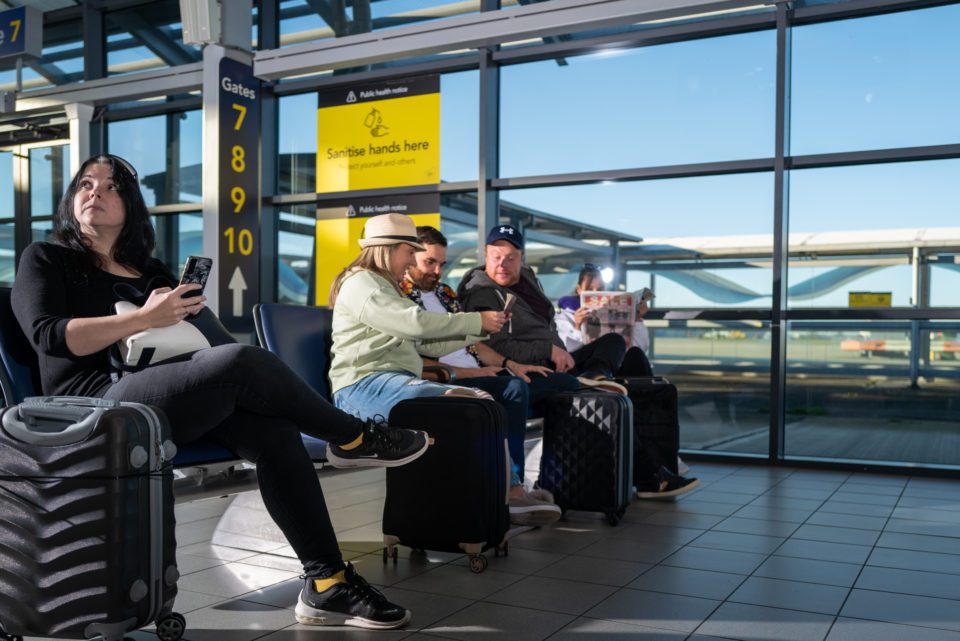
From the facilities available to how security works, we answer your airport questions here

Frequently asked questions
Answers to common queries about aircraft noise and noise management at London Southend Airport.
Whilst passenger flights cannot be scheduled during the night time, London Southend Airport is permitted to operate up to 120 other air transport movements (ATMs) between 23:00 – 06:30. These may include; freight, private charter (executive business jets), training and non-passenger positioning flights. Delayed, diverted and exempt (e.g. police, coastguard and emergency) flights may also operate.
There are many reasons why a passenger flight may be delayed or diverted.
Weather
Weather disruption is a common reason for flight cancellations and delays. Whether there’s a snow storm, lightning or strong winds, planes are not allowed to fly during any extreme weather conditions. Heavy rainfall and fog (reasonably common in the south east of the UK) are also responsible for flight cancellations and delays.
Air Traffic Control Strikes
Flights may be delayed or cancelled due to Air Traffic Control strikes in other countries. For example, when French ATC takes industrial action during a busy summer period this will affect a much wider range of the European network than just those aircraft landing or departing from airports in France. Many aircraft routing towards a destination to the south of the UK, will have to overfly France and will therefore be affected. During events such as this, other routes and sectors of airspace will be impacted by the event and Air Traffic Flow measures (‘slots’) will be applied. This invariably results in delays to flights from Southend as aircraft wait for their ‘slot window’.
Congestion in air traffic / Available slots
Whilst the sky’s above Southend and the immediate surrounding areas may seem quiet, it could well be the case that the Upper Controlled Airspace is very congested. Southend ATC may need to await clearance from other air traffic control sectors before releasing outbound aircraft.
Late arrival of the aircraft to be used from a previous flight
Passenger aircraft based at Southend are normally scheduled to operate three destinations a day. Delays caused during the first or second destination flights may impact the aircraft schedule and result in delays later in the day.
Boarding passengers
Passengers that have checked in but are late boarding (or do not board) the aircraft can delay departure. If the number of passengers boarded do not match the flight manifest, checks will be made to identify the missing passengers and baggage may have to be removed from the hold.
Passengers taken ill
The primary concern for all airlines will be the safety of passengers. It may be necessary to divert a flight to the nearest airport if a passenger is taken ill. The aircraft may be delayed whilst medics attend the aircraft before the flight can be resumed.
Technical issues
There are times when an aircraft is affected by minor or serious technical issues. In case of any such technical problem, the passengers will not be allowed to board the plane until the issue is dealt with. If the problem is a serious one, the airline might be forced to cancel the flight altogether and find a replacement aircraft resulting in significant delays.
Flight crew limitations
For safety reasons all Flight Crews are restricted to maximum working hours and are required to take minimum rest periods. When delays occur, for any of the reasons stated above, Flight Crews may go ‘out of hours’ and replacement crews may need to be sourced from other airports before a flight can continue.
Extraordinary events
There can be more unusual reasons for unavoidable flight delays or cancellations. E.g. security alerts, national and international events, extreme weather, volcanic eruptions (ash clouds).
Whilst passenger flights may only be scheduled between 06:30 – 23:00 (a limited number between 23:00 – 23:30) delayed aircraft may still operate back to Southend during the night-time period.
This was considered as part of the planning application for the runway extension; Southend City Council, Rochford District Council and Essex County Council agreed that as London Southend Airport had always been operational during the night-time, and was already a diversion destination for other airports, and it was reasonable for delayed passenger flight to be able to return passenger back to Southend when there no other suitable alternative airports in the London area.
Delays and cancellations have a huge financial impact on both the airline and the airport.
Airlines will do everything possible to ensure aircraft operate to schedule to avoid compensation payments, additional airport duties and crew costs.
Unavoidable delays also impact the passengers, and airlines will do everything possible to return them to their destination airport.
Aircraft must also be returned to their base airport to be available for departures the following morning.
Firstly, we always recommend that you spend some time in the area to gain an understanding of where aircraft fly in the vicinity. It is best to pick different times over a number of different days so you can understand how the schedule and routes can vary. You can use WebTrak to view typical departure and arrival routes. We also encourage you to get in touch with us so we can give you an accurate picture of flight paths and any more information to better inform your decisions. Your estate agent should be able to put you in touch with the seller of the property to discuss their experiences but please remember that noise is subjective, what affects one may not affect another. For further information, please email our Noise Manager at [email protected].
There are occasions where aircraft are instructed by Southend Air Traffic Control (ATC) not to follow the noise preferred routes, usually due to weather conditions or other safety reasons. However, if an aircraft deviates for no reason, a full investigation will be carried out in conjunction with the aircraft operator.
In the first instance, we request a thorough investigation as to the cause of the breach to determine whether it was due to any mitigating circumstances such as weather or aircraft avoidance.
If it is established that pilot error is the primary cause, a formal infringement notice is issued. Steps are taken to ensure that the operator concerned has all of the correct noise abatement controls to ensure no further breaches occur; however, if they continue to breach then automatic fines are issued.
The London Southend Airport Consultative Committee is responsible for reviewing all infringements and they decide which local charitable causes should benefit from any fines collected.
Aircraft will only depart over Thorpe Bay/Shoeburyness when the wind direction is north easterly (approx. 30% of the time) and they are routing towards a destination in Southern Europe. As there can be quite lengthy periods of time when departures are operating over Leigh on Sea due to the prevailing wind conditions, residents to the east/east west of the airport may assume that this is the ‘correct’/’usual’ departure pattern and can be alarmed/surprised when they notice aircraft in their location.
Aircraft will always fly the safest and expeditious route toward their destination – meaning that they are carefully positioned with consideration for other conflicting air traffic and provided the quickest route to gain height into the upper controlled airspace.
Since the introduction of the London Airspace Management Programme (LAMP) Phase 1A, in February 2016, London City arrivals have been routed further south of the airport, along the Thames Estuary. As a result, Southend departures must remain below the overhead air traffic at 3,000ft.
Further information on LAMP can be found on the CAA website.
Due to the hazardous nature of work carried out at MOD Shoeburyness, an Air Danger Area is established by the Civil Aviation Authority (CAA) around Shoeburyness and Foulness, when any of the Ranges D136, D138, D138A or D138B are active. Southend Airport Air Traffic Control provides a Danger Area Activity Information Service (DAAIS) to warn pilots of aircraft flying outside controlled airspace, when the Ranges are active. Southend Airport receives daily communication from the range controller to confirm when the site is active. It is not always obvious to the general public when the site is active due to the differing nature of the work that is carried out at the range. General information is provided as:
Activity: Live Firing / Unmanned Aircraft Operations.
Hours: Mon-Fri 0830-1800 Winter (Summer 1 hr earlier) and when notified.
Further information on the Qinetiq website.
The no fly restriction zone map can be found in the UK AIP.
It is not possible to extend the straight departure route for aircraft departing on runway 05 (towards Rochford) further east before turning south (effectively going the longer way round the Qinetiq site to avoid Thorpe Bay/Shoeburyness) as this will result in increased track miles (i.e. fuel spent and CO2 pollution) and possibly increased delays due to:
Hockley and Rayleigh fall within the Class D controlled airspace associated with Southend Airport therefore aircraft may be positioned and/or routed overhead. The precise positioning will depend on a number of factors including where control of the aircraft is handed over to Southend ATC from the upper controlled airspace.
Arriving aircraft using runway 05 (when the wind is North Easterly);
Aircraft on final approach to Southend from destinations to the North or East of the airport that are required to land on runway 05 will be routed to the north of the airfield over Hockley/Rayleigh in order to turn and come back around to line up with runway 05 from 5-8 miles out.
Since the introduction of the London Airspace Management Programme (LAMP) Phase 1A, in February 2016, London City arrivals have been routed further south of the airport, along the Thames Estuary. As a result, Southend arrivals are usually routed north of the airfield to avoid conflicting air traffic and the No Fly Zone at the MOD site in Shoeburyness when it is declared active.
Further information on LAMP can be found on the CAA website.
The map below shows how aircraft arriving on runway 05 from the North or East of the airport may operate;
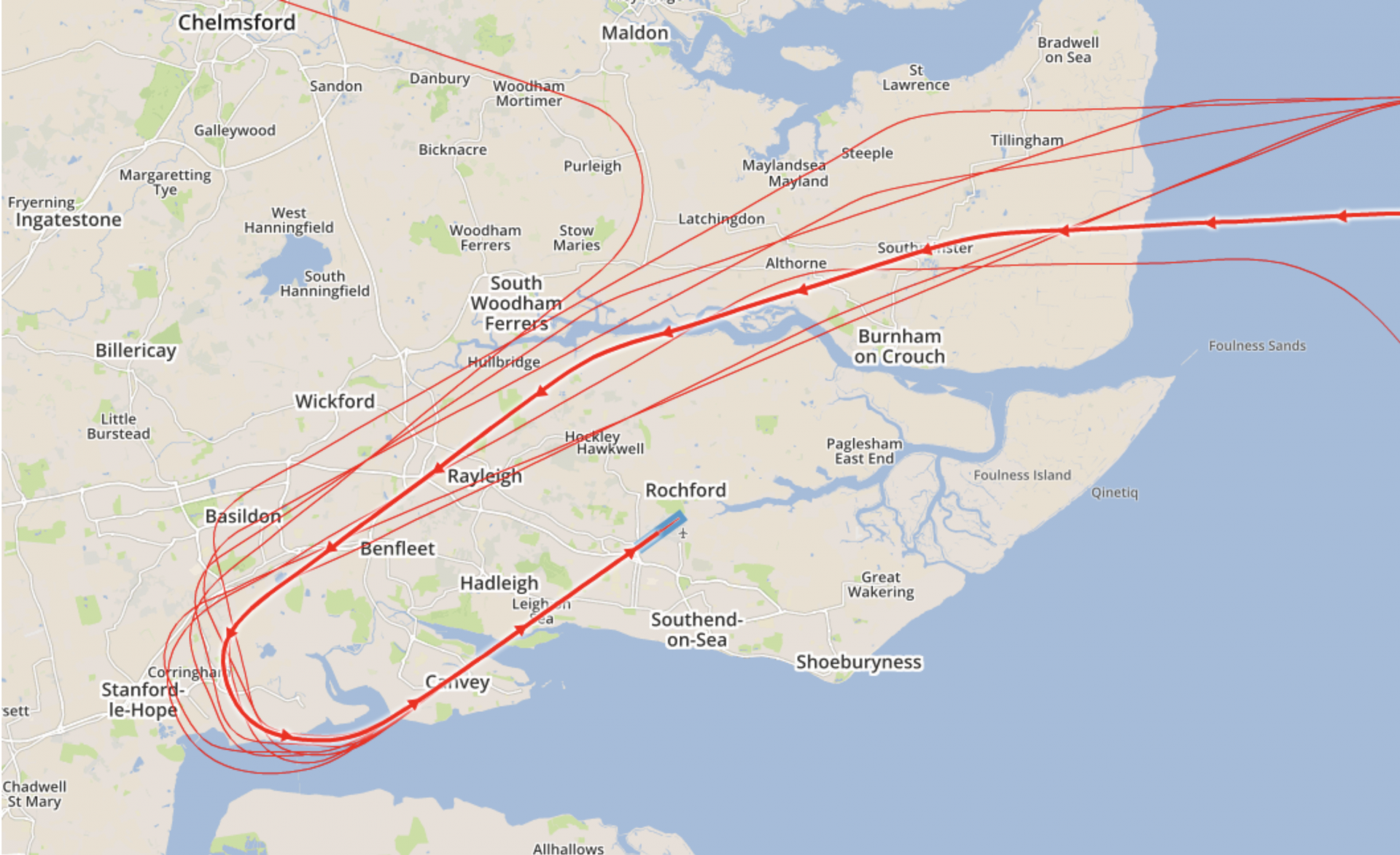
Departing aircraft using runway 23 (when the wind is South Westerly);
Aircraft departing on runway 23 (when winds are South Westerly) that are flying to a destination to the East of the airport (Holland/Germany/Belgium) will be routed towards a ground based navigational system in Clacton before they head out over the Channel. The map below shows how aircraft departing on runway 23 that are routed towards Clacton may operate;
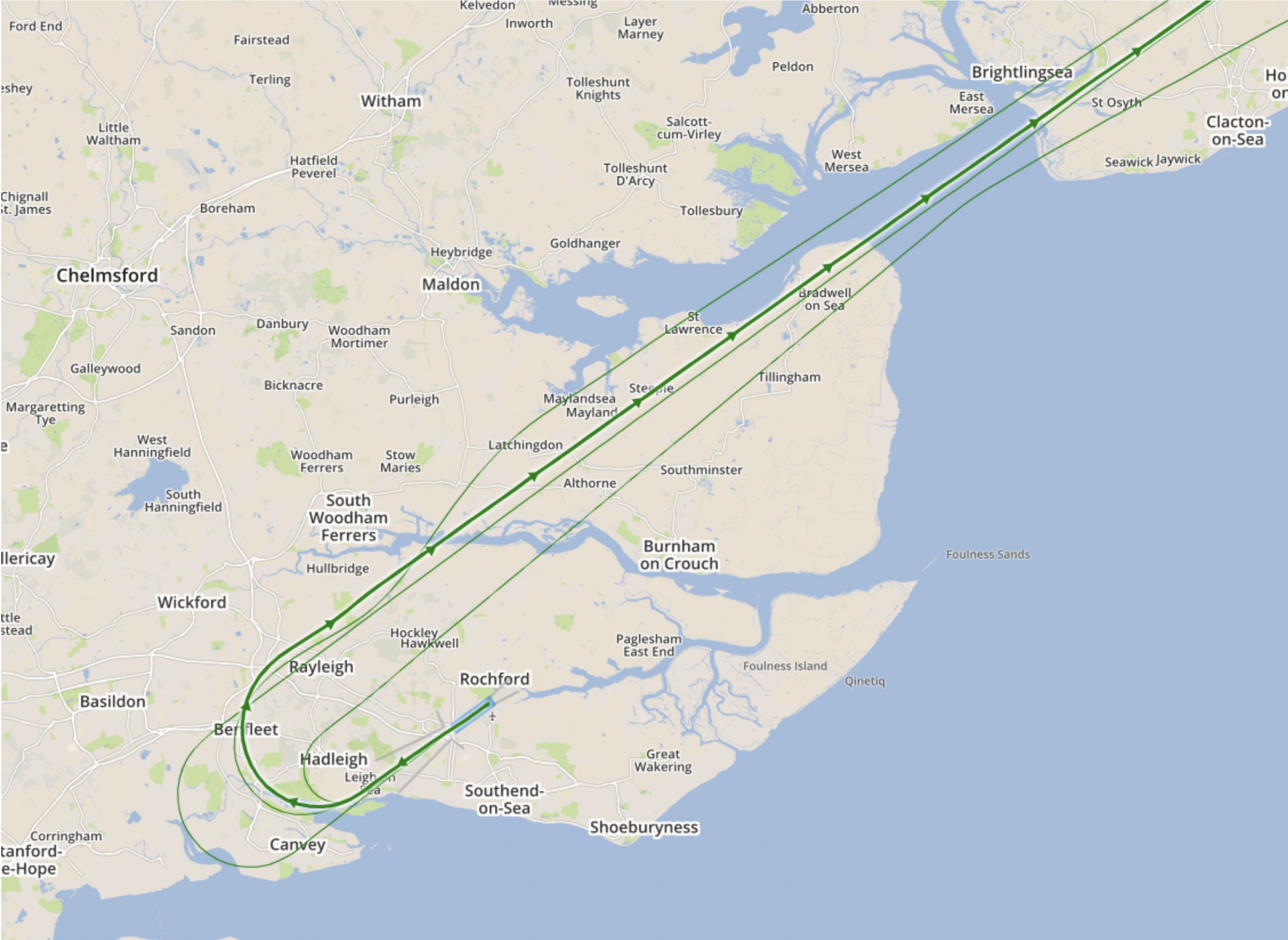
Aircraft operating over your location should not be under the direct control of Southend Air Traffic Controllers. Aircraft departing Southend will be passed to Thames Radar as they approach 3,000ft and are transferred on route as they transition into the upper airspace. Arriving aircraft will be directed by Thames Radar until they are closer to Southend (the direct position of the hand over will depend on overhead traffic and how busy the surrounding airspace is.
London Southend Airport is also a stakeholder in the development of the wider UK Airspace Modernisation Strategy that is being sponsored by the Department for Transport and developed by the CAA. This will see a once in a lifetime opportunity to modernise airspace, in particular in the SE region of the UK, that has not had any significant changes for the last 50 years. London Southend Airport has filed an Airspace Change Proposal to support this strategy.
The logistics operation is part of a global network that operates 24/7. The scheduling for Southend arrivals and departures has to fit with scheduling at other European airports that are part of the logistics network.
London Southend Airport has put a wide range of measures in place to control and minimise ground noise. Airport ground noise is defined as any noise, other than that which is generated by aircraft in flight, taking off or landing. The main sources of airport ground noise are aircraft taxiing, aircraft mounted auxiliary power units (APUs) and testing.
Passenger flights may be scheduled to depart from 06:30. The airline (and Flight Information Display (FID) screens) may advertise a slightly earlier departure time than 06:30 to allow for the aircraft to be boarded and pushed back from stand, however Southend ATC will not allow any passenger aircraft to depart the runway prior to 06:30.
Based aircraft will usually be scheduled to fly up to three different destinations per day which is why they will all depart soon after 06:30, there will then be a fairly quiet period until the first wave of aircraft start to return to Southend.
Departures will then be staggered for the rest of the day as destination distances vary.
Passenger flights may be scheduled to arrive up until 23:30 (with restriction on the number that then can be scheduled between 23:00 – 23:30 – please refer to the Operational Controls Summary. Aircraft that are scheduled before 23:30 may occasionally be delayed due to circumstances beyond the airports control e.g. bad weather (fog/snow/storm), Air Traffic Control industrial action, technical faults, delays at the destination airport.
Delayed aircraft are permitted to return to the airport during the agreed night time period. Both the airport and the airlines work very hard to avoid delays. As well as wanting to provide great customer service and avoid late flights, any delays are very costly with regard to compensation claims, staffing costs and onward travel arrangements.
Private helicopters are banned at night. Helicopters operated by the Police, HM Customs, Coastguard, Military and Air Ambulance are exempt from the ban, in accordance with the S106 Planning Agreement.
The true definition of Airspace is the portion of the atmosphere controlled by a country above its territory, including its territorial waters or, more generally, any specific three-dimensional portion of the atmosphere. The airspace over Southend Airport is classed as controlled airspace. Controlled airspace exists where it is deemed necessary that air traffic control has some form of positive executive control over aircraft flying in that area. This is for the safe passage of commercial aircraft and is for the safety of passengers on board the flight. Air Traffic Control will sequence flights within controlled airspace to ensure that strict separation is maintained, both laterally and horizontally between aircraft. An aircraft can manoeuvre anywhere within an area of controlled airspace. The following links to the NATs and CAA websites may be helpful in explaining how the airspace is managed.
Most airports have noise and track keeping systems which take radar data from air traffic control and combine it with flight information such as a call sign, tail number, type and destination. London Southend Airport is no exception.
London Southend Airport operates a Noise and Track Keeping System that captures data from two fixed noise monitors which are located approximately one mile from each end of the single runway – as shown on the map below.

The data captured by all these systems is used to investigate noise and route keeping complaints and also to validate noise contour data. Noise Monitor Location 1: School Way Noise Monitor Location 2: Stambridge Road.
Noise Complaints Handling Service
London Southend Airport has announced a new online self-service system called WebTrak to enable local residents to view all aircraft movements in the vicinity of the airport.
Complaints regarding noise at the airport should be made in the first instance via WebTrak.
Alternatively, noise complaints can be made in writing to:
The Noise Manager, London Southend Airport, Southend-on-Sea, Essex SS2 6YF
Please note that as from 31st March 2021 we will only accept noise complaints via WebTrak, or via postal mail. Complaint forms submitted through third party groups or organisations, standard internet mail, or bulk mail services may not be received or processed due to anti-spam controls and Internet Service Provider policies.
Please ensure that your letter includes your full name, address and a contact number as well as details of the aircraft/flight you wish to complain about i.e. date, time, and the nature of your enquiry/complaint.
The airport collates monthly noise complaint data which it reports to the Airport Consultative Committee and other organisations. Given the need to report accurately and also to report on a timely basis, we regret we are unable to process noise complaints which are more than 2 weeks after the noise event.
Investigating the event
Once the data relating to the complaint has been recorded, it will be investigated. The investigation will be processed through the Noise Desk system and may involve further actions as necessary to establish the circumstances of the flight. If further information is needed the person making the complaint will be requested to provide more information / specific details so the investigation can continue. Once the investigation is complete the findings will be recorded in the database, including, if necessary, a summary of any conversation / correspondence with the person making the complaints.
Response
Once fully investigated, a written response will be sent explaining the event which created the noise incident and will conclude whether the identified aircraft was operating to standard procedures, with the airport’s operating conditions. The response will ask for the person making the noise complaint to respond within 10 days if they are dissatisfied otherwise the matter will be filed. The appointed noise manager will continue to investigate any further comments on the matter however if after further investigation and further response the person making the noise comment remains dissatisfied the matter will be referred to the Airport Consultative Committee for further consideration. All data relating to noise complaints is collated monthly and shared with the local councils and Airport Consultative Committee. A summary of all noise complaints is provided within the airports Annual Report.
More information and guidance on making a noise complaint is available on our aircraft noise page.
In order to respond to community concerns about aircraft noise, London Southend Airport has a mobile noise monitor (NMT). We work with the airport consultative committee to agree on where the NMT is deployed in response to community concerns.
In accordance with the conditions set out in the Section 106 Planning Agreement, London Southend Airport commissions an independent firm of aviation noise specialists to produce noise contours every two years for the summer period. This started in 2012 when the runway extension was opened.
These contours have been used to identify any properties which are in residential, educational or hospital use that qualify for either:
More information on how noise around airports is monitored.
If your property falls within the 63dB LAeq 16 hr noise contours you will automatically be contacted by the airport and invited to apply for your property to be insulated under our Sound and Thermal Insulation Grant Scheme.
This scheme has been introduced to offer sound attenuation to homes identified as falling within the 63dB LAeq 16hr noise contour. Qualifying homeowners can apply for either:
The airport will offer to sound insulate up to two living rooms and all bedrooms up to a maximum of habitable rooms (i.e. not including bathrooms, conservatories, hallways or kitchens, unless used as a dining area) in total under the scheme. A landing may be included instead of another room.
Where a kitchen and living room are in the same room or where an external door opens immediately into a habitable room then these rooms will be eligible for the Sound and Thermal Insulation Grants Scheme.
As the homeowner you may add rooms or upgrades to the white PVC-U windows offered within the scheme at your own cost.
Free mechanical ventilators will be offered with either option, where required. Where secondary sound insulation or double glazing is fitted to a window facing south and this gives rise to solar gain an additional sum of up to £150 (Index Linked from June 2012 incl. VAT) will be paid for solar shading measures.
In addition, we will offer to install loft insulation of a type to at least 270mm to improve the sound attenuation of any qualifying properties.
The work will be carried out by a glazing contractor appointed by the airport and will be guaranteed for a minimum of 5 years against defective workmanship or materials. Qualifying properties shall only be entitled to one grant and once installed any sound insulation (glazing or loft insulation) shall become the responsibility of the property owner/occupier.
You may not wish to take up this offer at the current time; however, you will remain eligible for the scheme for a period of 10 years from the date of the property’s first inclusion in the Sound and Thermal Insulation Grants Scheme i.e. qualifying as within the 63dB LAeq 16hr noise contour.
The latest noise contour maps are published in the Annual Report. The noise contours are reviewed every two years and all qualifying properties falling within the contours will be notified if they qualify for the Property Acquisition or Sound and Thermal Insulation Grant Scheme.
In accordance with its S106 Planning Agreement, London Southend Airport offers a Wake Vortex Compensation/Repair Scheme; This scheme covers any residential property, including residential properties above commercial premises (eg. flats above shops).
Wake Vortices are turbulence in the air formed behind an aircraft, particularly when landing. Many of the new aircraft operating at London Southend Airport such as the Airbus A319 and Embraer 170/190 are equipped with winglets. These winglets improve aerodynamics and reduce the intensity of the wake vortices and reduce the likelihood of a wake turbulence impacts. Wake turbulence damage is usually verified by its pattern of damage. Only traditional slate or tiled roofs can be damaged and this damage is usually in the centre of the roof.
The legal liability for damage caused by wake vortex is with the aircraft operator but, because of the difficulty in establishing which aircraft may have caused the damage, the Airport provides a scheme to ensure that damage is repaired.
If you think your property has been affected by wake vortices, please contact us as soon as any damage caused by wake turbulence is noticed.
When a complaint of damage to property caused by wake turbulence is received the Airport will, within 15 days, investigate the extent (if any) to which the damage has been caused by wake turbulence. If it is established that damage has been caused by wake turbulence, then the property owner or occupier will be able to choose either to have the damage remedied by the Airport directly within six weeks of the date of the complaint or to have the sum representing the estimated cost to the Airport of undertaking remedial works itself paid by the Airport to the property owner or occupier.
No – the extended runway at London Southend Airport first came into use on 8 March 2012, so the first claim day was 9 March 2013. The Limitation Act 1980 stated that a person whose property has been reduced in value by more than £50 by physical factors caused by the use of a new or altered runway must submit a claim within six years of the first claim day – i.e. 9 March 2019. After that six-year ‘limitation period’, we can no longer be ordered to pay compensation.
The Air Traffic Control team at London Southend Airport constantly review procedures, airspace requirements and developments in the industry, to allow the air traffic service to be improved and to maintain our excellent safety performance. Recently we consulted on changes to arrival routes that will take advantage of performance-based navigation technology in use by most aircraft operators at London Southend Airport. Further information can be found on our webpage.
London Southend Airport is also a stakeholder in the development of the wider UK Airspace Modernisation Strategy that is being sponsored by the Department for Transport and developed by the CAA. This will see a once in a lifetime opportunity to modernise airspace, in particular in the SE region of the UK, that has not had any significant changes for the last 50 years. London Southend Airport has filed an Airspace Change Proposal to support this strategy.
More general information about this can be found via The sky’s the limit website, but London Southend Airport will continue to engage with the local community groups as the strategy is further developed.
Operators of drones should fly in accordance with the Air Navigation Order, which is summarised in the Drone Code.
Commercial operators may have further permissions from the Civil Aviation Authority that allows them to operate in a different way – for example above 400 feet. They will also be in contact with Air Traffic Control to ensure that their flight can be coordinated with the airport operation.
If you believe that a drone is not being flown in accordance with the law, then you should contact the local police.
If you would like to operate a drone in either the Flight Restricted Zone (FRZ), the Runway Protected Zone (RPZ) or in controlled airspace surrounding Southend Airport, then please contact Southend ATC through the enquiries e-mail: [email protected].
If you would like to operate a drone in either the Flight Restricted Zone (FRZ), the Runway Protected Zone (RPZ) or in controlled airspace surrounding London Southend Airport, please request a ‘UAS request’ form from [email protected] – titled “DRONE REQUEST”. Once complete and submitted, processing may take up to 5 working days.
Here is our quick six step guide to using WebTrak:
It may be that you have noted an incorrect date or time. WebTrak allows you to view other flights before and after the time specified. It may also be that the noise that disturbed you was not related to a London Southend Airport operation.
WebTrak sources data directly from the airport’s secondary radar.
A back-up radar feed from London Stansted Airport is available when required.
WebTrak is using the secondary radar data that the airport uses for managing aircraft operations.
Secondary radar uses an airborne transponder which responds to the receipt of a pulse from a ground-based antenna by transmitting a return signal. Because the transponder transmits a much stronger signal than that which is reflected off an aircraft in primary radar systems, greater range and reliability can be achieved with secondary radar.
Radar data publicly available flight tracking websites (such as FlightRadar24) use crowd sourced data collected from privately owned ADS-B receivers which receive data from the aircraft as they pass overhead.
These different data sources can mean that aircraft operations may appear different between WebTrak and other publicly available aircraft tracking systems.
In addition to this, WebTrak displays the altitude of aircraft operations as Above Mean Sea Level (AMSL) and corrects for air pressure. This may not be the case for some publicly available flight tracking systems and is likely to be the reason for differences between the sites.
Complaints regarding noise at the airport should be made via WebTrak.

From the facilities available to how security works, we answer your airport questions here
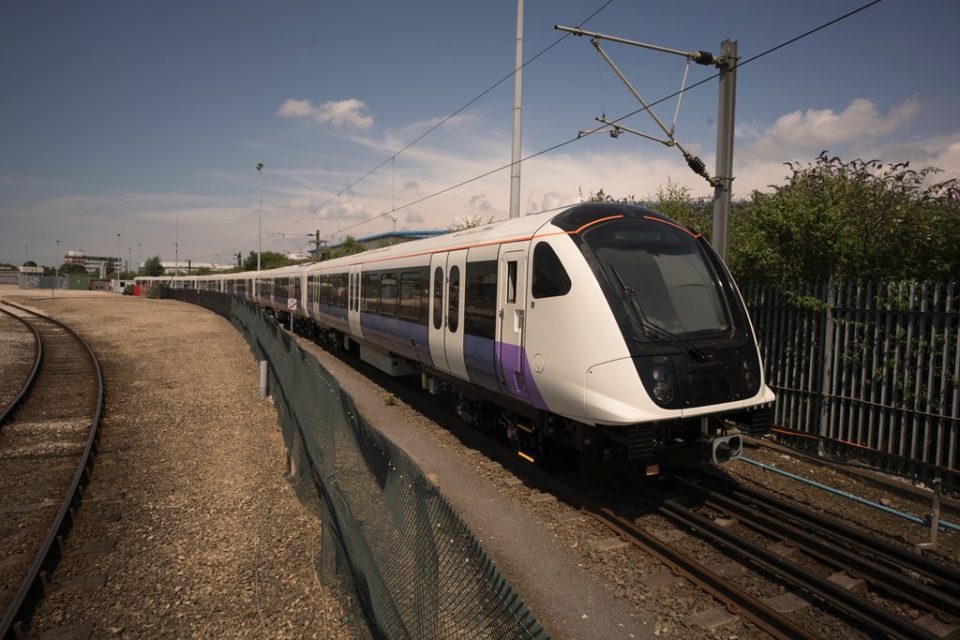
Your journey questions covered, no matter how you’re planning to travel to London Southend Airport
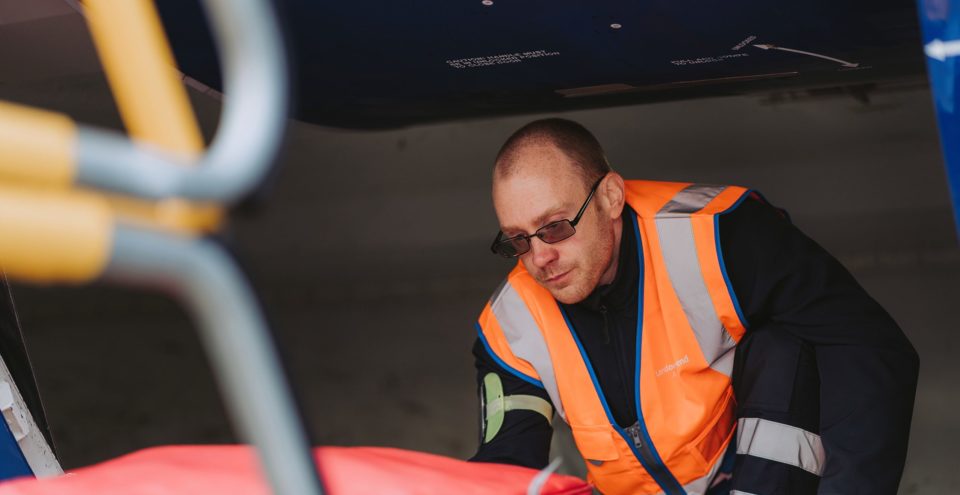
Your questions about our logistics partnership are answered here

Need help? Explore our frequently asked questions